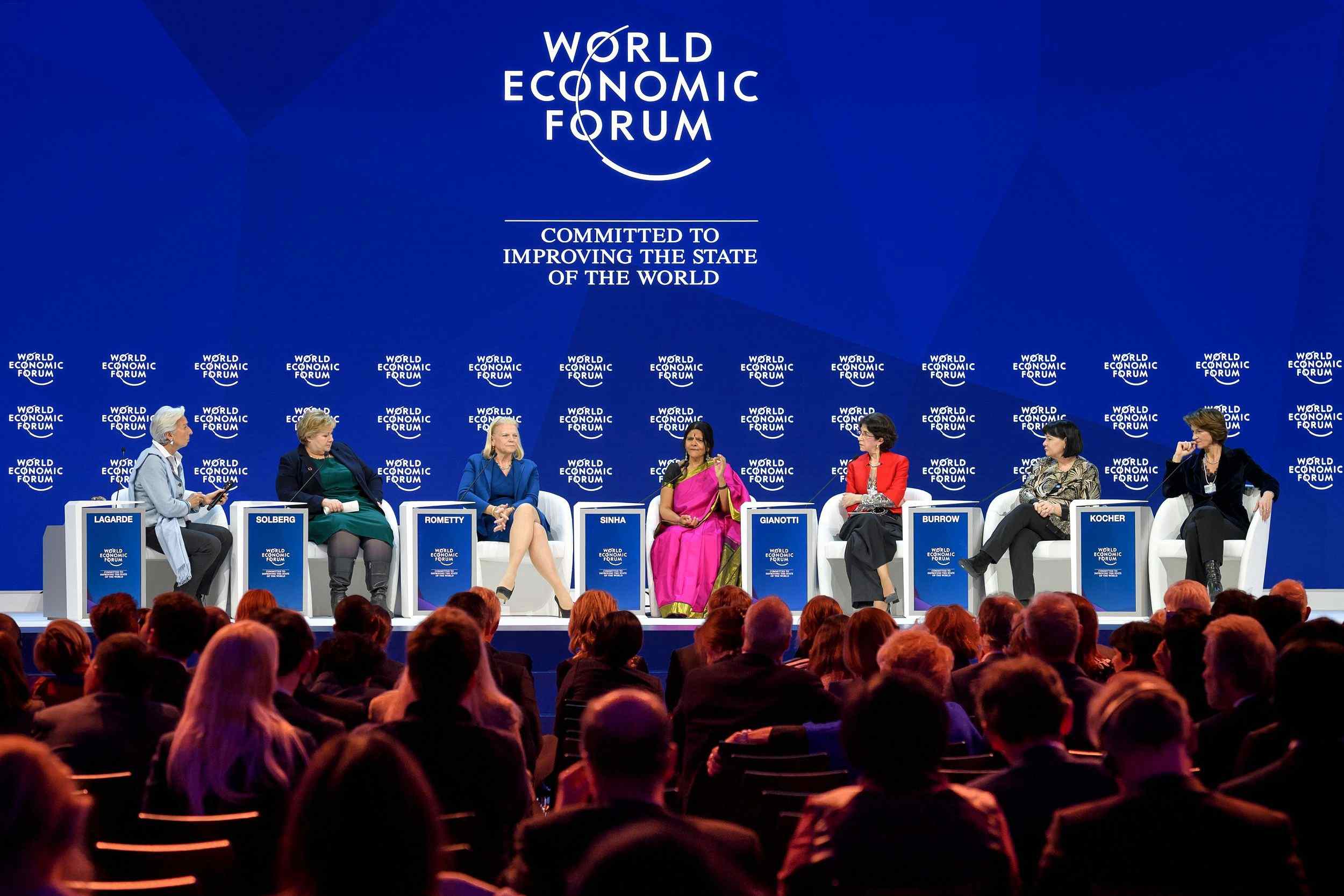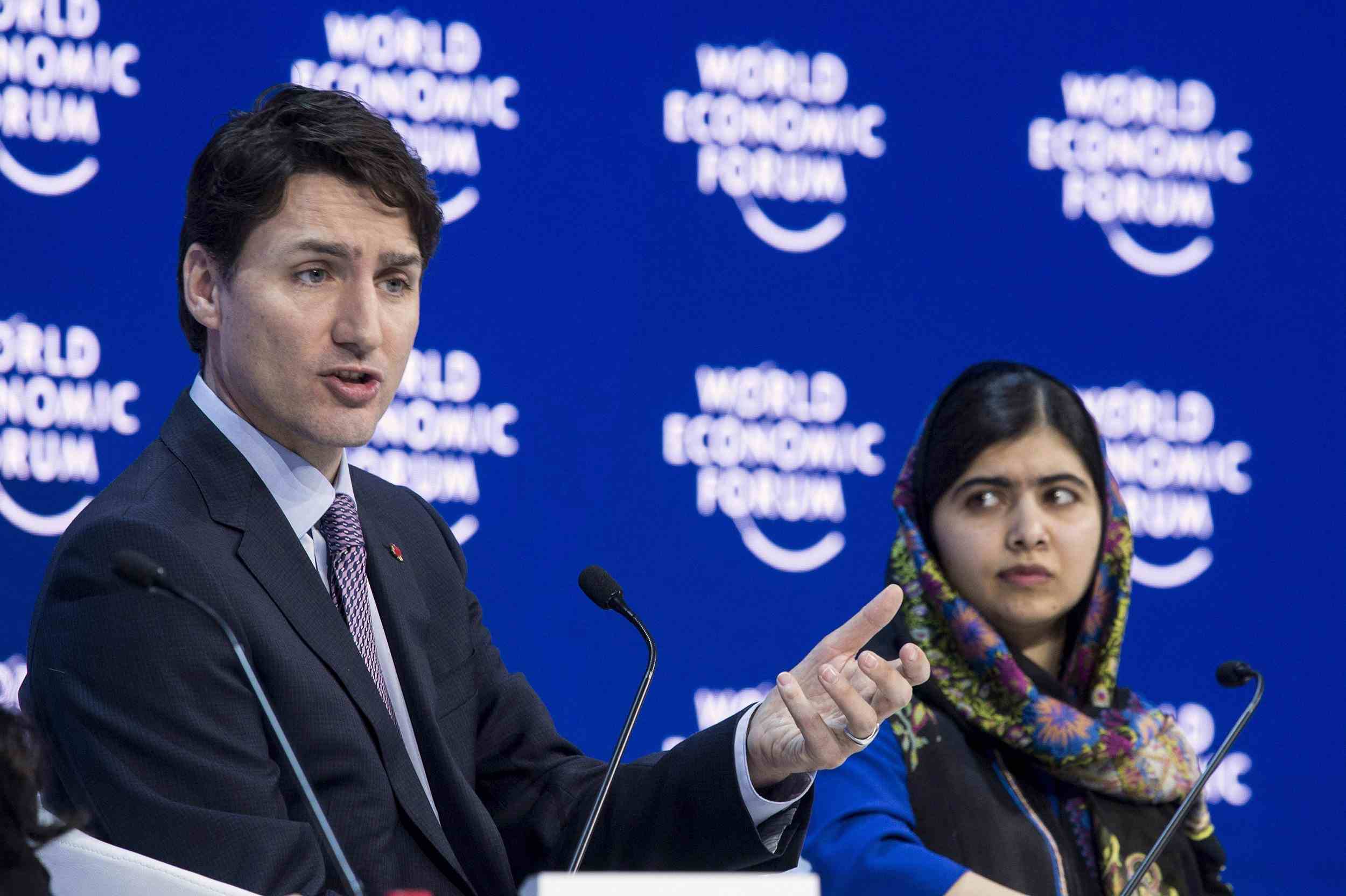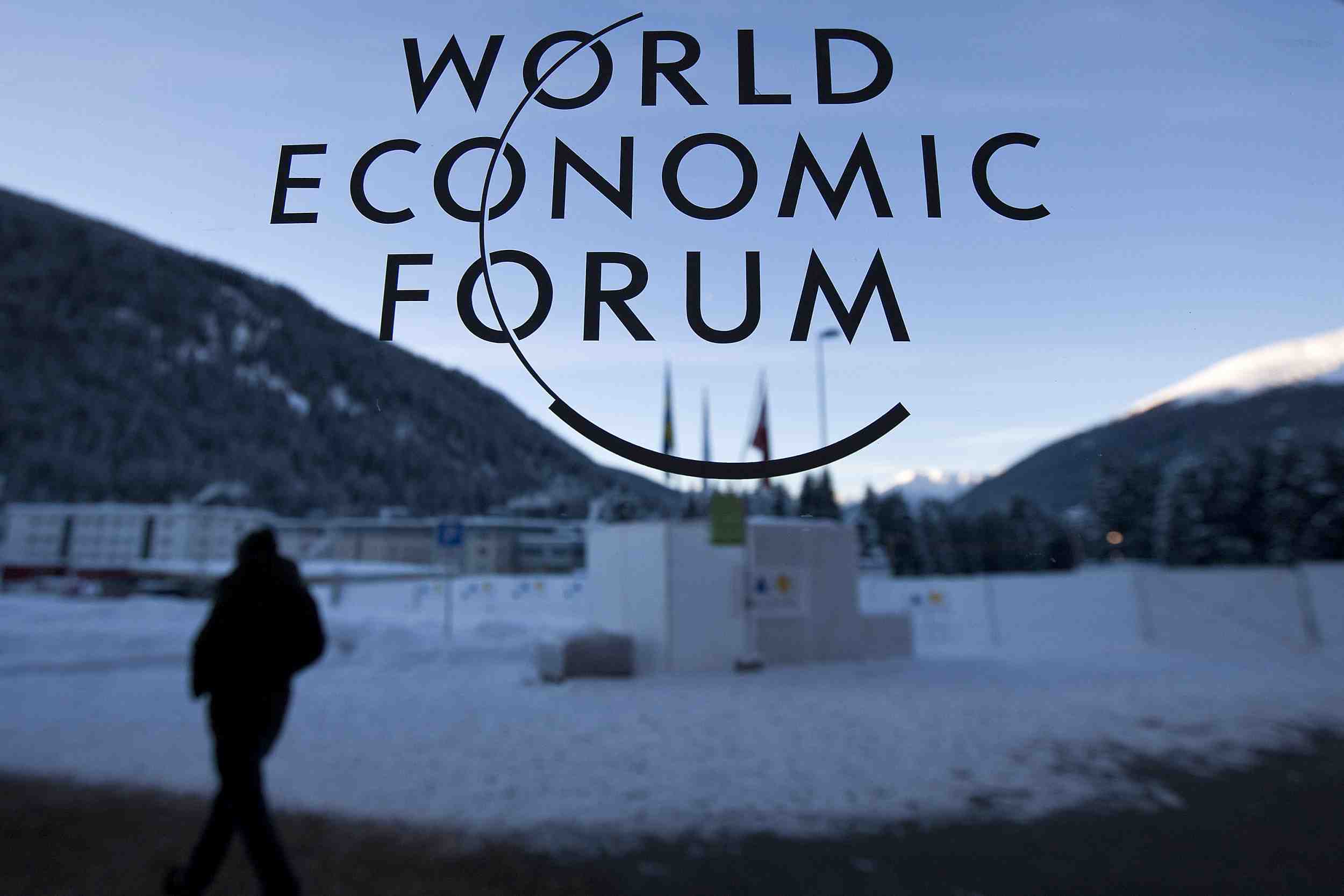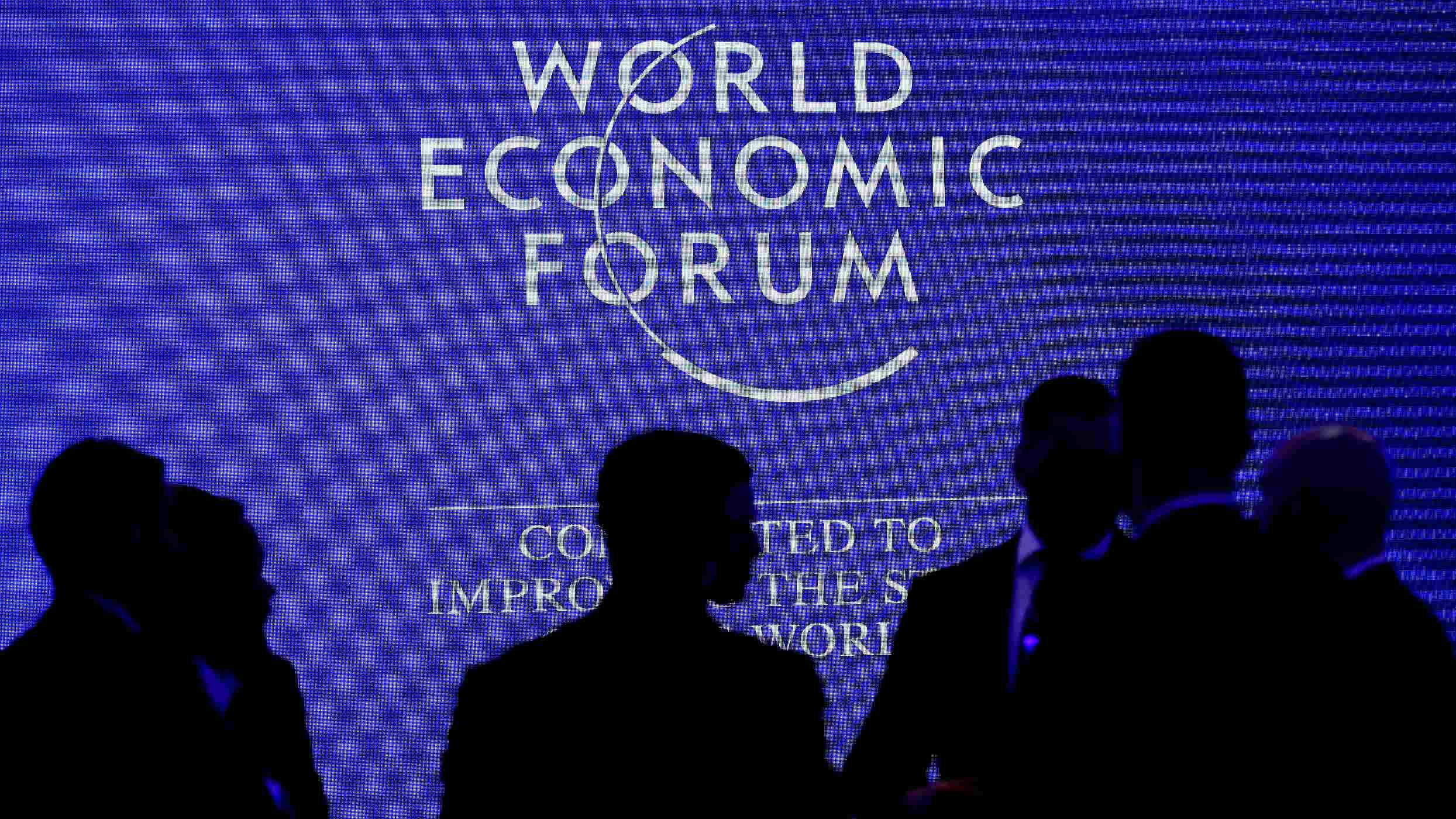“Finally a real panel, not a ‘manel.'”
Speaking at last year's World Economic Forum in Davos, International Monetary Fund Chief Christine Lagarde expressed her delight at having an all-woman group filling the forum's seven co-chairs for the first time.
That groundbreaking panel came at the peak of the #MeToo campaign, with the 2018 WEF
focusing heavily on gender parity and equal opportunities for women.
While this year's panel of co-chairs features four women to three men, a look at the 2019 Davos attendee list suggests last year's focus on fighting inequality was nothing more than a disappointing publicity move.

The 2018 all-female panel of Davos co-chairs. (L-R) International Monetary Fund Managing Director Christine Lagarde, Prime Minister of Norway Erna Solberg, IBM CEO Ginni Rometty, Founder of Mann Deshi Foundation Chetna Sinha, European Organization for Nuclear Research Director-General Fabiola Gianotti, International Trade Union Confederation General Secretary Sharan Burrow and ENGIE CEO Isabelle Kocher. Was it a groundbreaking moment, or just a photo opportunity? /VCG Photo
The 2018 all-female panel of Davos co-chairs. (L-R) International Monetary Fund Managing Director Christine Lagarde, Prime Minister of Norway Erna Solberg, IBM CEO Ginni Rometty, Founder of Mann Deshi Foundation Chetna Sinha, European Organization for Nuclear Research Director-General Fabiola Gianotti, International Trade Union Confederation General Secretary Sharan Burrow and ENGIE CEO Isabelle Kocher. Was it a groundbreaking moment, or just a photo opportunity? /VCG Photo
Davos is still overwhelmingly male
No action on inequality has taken place at Davos itself. This year's WEF promises to be, yet again, overwhelmingly male, white and old.
Eighty-eight percent of attendees are men. Among countries sending more than 10 people to Davos, Norway has the biggest female representation (37 percent.)
Only 32 percent of American attendees are women, a proportion higher still than China (23 percent), the UK (26 percent) and Canada (23 percent, despite PM Justin Trudeau's keynote speech at Davos 2018 advocating gender equality.)

Canadian Prime Minister Justin Trudeau and Nobel Peace Prize winner Malala Yousafzai discuss gender equality at Davos on January 25, 2018. /VCG Photo
Canadian Prime Minister Justin Trudeau and Nobel Peace Prize winner Malala Yousafzai discuss gender equality at Davos on January 25, 2018. /VCG Photo
Wealth of European, U.S. attendees doesn't reflect the modern world
With more than 3,000 participants attending, around two thirds (2,090) come from Europe and North America, two regions which represent less than 14.4 percent of the world's population, according to United Nations data.
Less than a sixth of the participants (502) will travel to Davos from Asia, despite the continent representing more than half of the world's population.
While Davos is an unabashedly elitist affair, these numbers don't even reflect today's global elite.
Twenty-seven percent of the world's ultra-wealthy (people with fortunes more than 30 million U.S. dollars) are in Asia, just behind 28 percent in Europe, according to the World Ultra Wealth Report 2018.
However, there will be twice as many Europeans at Davos.
Davos is still an old boys' club
A look at the WEF's website suggests it is a body speaking up for gender equality (with an annual Global Gender Gap Report), global equality (How Can We Eradicate Poverty by 2030?) and young people.
Every October, the WEF holds the Young Global Leaders and Alumni Annual Summit, an invite-only gathering of 600 Young Global Leaders who are aged 38 and under and nominated to develop skills as “next-generation leaders.”

Is the World Economic Forum leaving too many people outside in the cold? /VCG Photo
Is the World Economic Forum leaving too many people outside in the cold? /VCG Photo
But data on this year's attendees suggests that Davos will again be a typically grey-haired affair, despite the WEF's proclaimed focus on young people.
One hundred and forty participants are aged over 70, compared to just 62 aged under 30.
More than five times as many attendees are 55 as those aged 35.
Is Davos still relevant?
It costs at least 60,000 Swiss francs (60,280 U.S. dollars) to be a WEF member, and last year a ticket to Davos reportedly required a further 28,000 U.S. dollars.
Beyond the WEF receiving more than 75 million U.S. dollars in revenue last year from membership and entrance fees, what is the point of Davos?
In last year's annual report, WEF Executive Chairman Klaus Schwab said the non-profit organization was still true to its original objective – “to be the world's foremost platform to shape global, regional and industry agendas through multi-stakeholder engagement.”
With 2019 set to pose further challenges to the global economy and trading system, Davos 2020 could well be the occasion to look back with closer scrutiny at what the WEF is truly trying to achieve as a platform, and whether or not those ambitions sincerely include greater equality and representation among its members.





